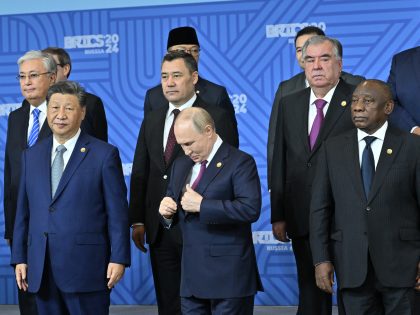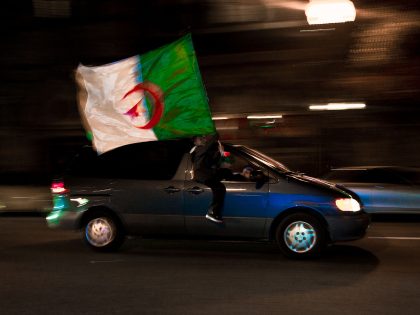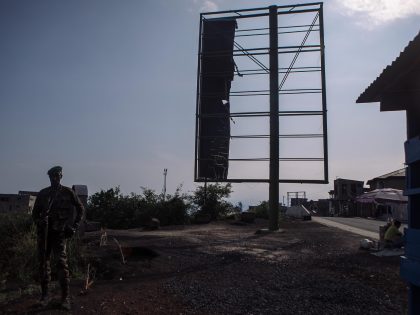This Studio Of A Life
The life and times of the great South African hip hop producer, Nyambz,

Nyambz (Photo: Tseliso Monaheng.
Inyambo Imenda is the birth name of producer Nyambz (or Nyambo). He went to high school in the proverbial ‘middle of nowhere’ — a small town called Harrismith in South Africa’s Free State Province where him and a rapper friend started making music. “There wasn’t any hip-hop scene; nobody was making beats,” he says of the place. Necessity, therefore, birthed the behemoth Nyambo would later become.
He met Thapelo Ramatlhodi, a fellow hip-hop head who ran an independent label called Fro-Pick records, while in university in the early 2000s. “He was running his production company called Haunted Fort productions with [the rapper] the Sceptre,” recalls Thapelo.
Together, they set about building a mini-empire which connected emcees from different corners of Pretoria; Mamelodi, Sunnyside, Arcadia, and Brooklyn converged at the altar of Nyambo’s beats. Fro-Pick released PTA Unlimited, a two-disc compilation which featured the scene’s mainstays such as Malik (of the group Ba4za), Urban Militia, and Damola. Rappers Sifiso Sudan and Tumi’s seminal ‘Once upon a time in Africa’ was also featured on the compilation.
Nyambo invited me over to document a recording session in Brooklyn, a formerly whites-only, ironically-named suburb east of Pretoria’s CBD, recently. He became somewhat of a beat-god in the mid-2000s, producing for every one one of the troika of South African hip-hop — Tumi, Proverb, and Zubz — at pivotal points in their music careers. ‘Microphone sweet home,’ Proverb’s melancholic lead single to his debut album Book of Proverb, remains the most leftfield rap single out of that era to have received any widespread recognition.
Nyambo’s knack for crafting head-nodding yet soulful soundscapes wrapped around muted bass lines, with expert sampling to boot, put him right at the centre of most heads’ sonic palettes. I will still lose my shit to his beat tape from 2006.
Nowadays, the beat prodigy spends his time supervising music projects. It’s always something he’s been into — he oversaw aspects of Tumi’s albums at one point, and also crafted an identity for an entire city (he ‘put Pretoria on the map’ so to say). He’s not too comfortable with that last point.
“Pretoria always had different sounds. [There were ] people [in] Mamelodi, Attridgeville, or Sunnyside that had different sounds to what…the camp that we worked with were putting out. That’s what people were exposed to, but for Pretoria there was always a variety,” he points out.
***
Located 60 kilometers north of Johannesburg, Pretoria’s the last place anyone would expect to find a thriving hip-hop scene. It’s there that producers like Nyambz and Mizi (Mtshali, one-time editor of Hype Magazine); rappers like Maliq and Hakeem (now Flexx Boogie) of Ba4za; and many more deejays and event organizers gave their souls to build a movement. The city became, if for a short time, the focal point of South African hip-hop.
“[Pretoria] was like this little gold-mine [that] no one knew about. The Joburg deejays would never come out; the scene was on its own level, with its own people,” says DJ Kenzhero of his days in Pretoria during the early 2000s. He now owns an exhibition space in Newtown and remains a highly sought-after deejay.
The way Kenzhero feels about Nyambo hasn’t changed since the two first met through rapper Sifiso Sudan.
“He would come to my place and play me his beats. I’d never heard anyone make music like that in this country, ‘til today!” declares Kenzhero.
He isn’t alone. Mizi stresses the importance of Nyambz to the Pretoria rap scene: “What happened was that [every producer] would be at Nyambz’s place. He basically set the tone of hip-hop in PTA…he made the beats.”
A different set of characters are in Nyambo’s presence today. He’s overseeing a studio session for Drop XVI, a one-shot viral video platform which aims to showcase a cross-section of South African hip-hop artists. All of the emcees present have either been working with him on-and-of for the past ten years or more, or were directly influenced by the music of Nyambo. Goliath Studio’s vocal booth is in the basement of an elegant building located opposite the Brooklyn Mall.
When the already-recorded tracks are played back, necks snap and everyone lets go of any hold-backs the prim and proper space may have induced. Mycbeth, a well-respected emcee and one-time member of the indomitable duo The Anvils with N’veigh, has recorded a song. Emcees in the room haven’t heard a Mycbeth verse in forever, so everyone’s elated. Clenched fists knock the air in tandem with the drums’ pattern; faces contort into unimaginable shapes and forms. In this moment, Pretoria hip-hop becomes alive again.
*
Ask anyone familiar with South African hip-hop, anyone who was active in it — even from the sidelines — in the mid-2000s about Nyambo and they’re going to attest to his genius. Alas, he couldn’t keep giving forever. The scene collapsed into itself once him and other stakeholders decided that life was leaving them behind; that hip-hop wasn’t going to pay the bills; and, most importantly, that people can be weird and thankless.
He tells me that he tried to make a beat just the other day but couldn’t; I joke that maybe it’s time to pass the tools onto his children.
*
I’m not interested in rapping that much anymore. I figured that telling stories about the artform I love and capturing hip-hop moments as they unfold, and displaying that as honestly as possible across many media — I figured that doing so was a better idea than being a rapper.
The session by Nyambo felt like a continuation of the journey I inadvertently set on all those years ago in Maseru when studio-hopping was a part of me.
I sometimes wonder how South African hip-hop would’ve shaped up had Nyambo and many others not been made to feel that their capacity to sacrifice their time to build a scene had been exhausted.



















